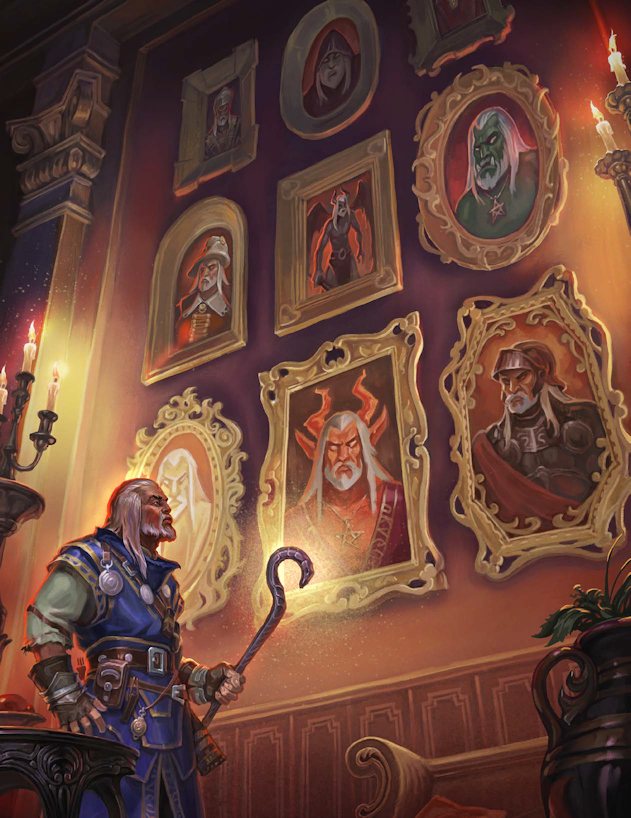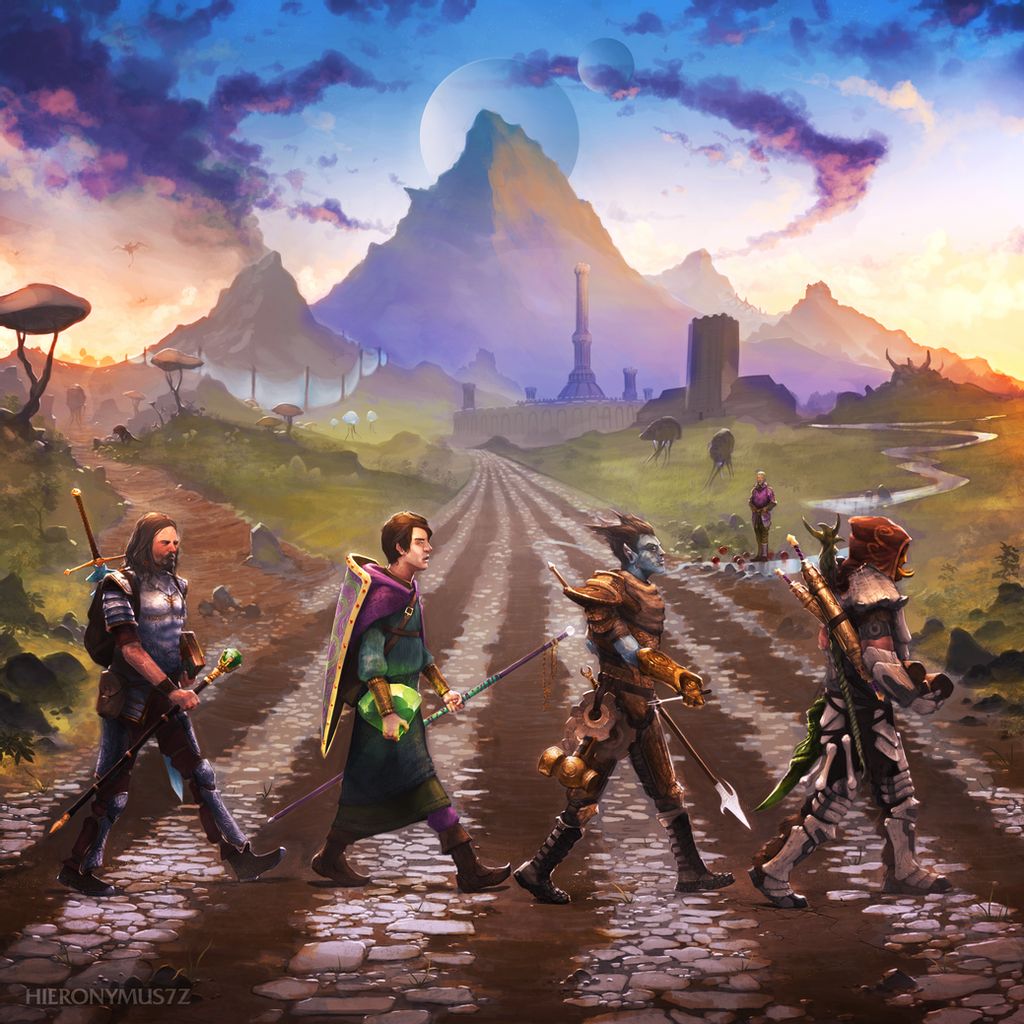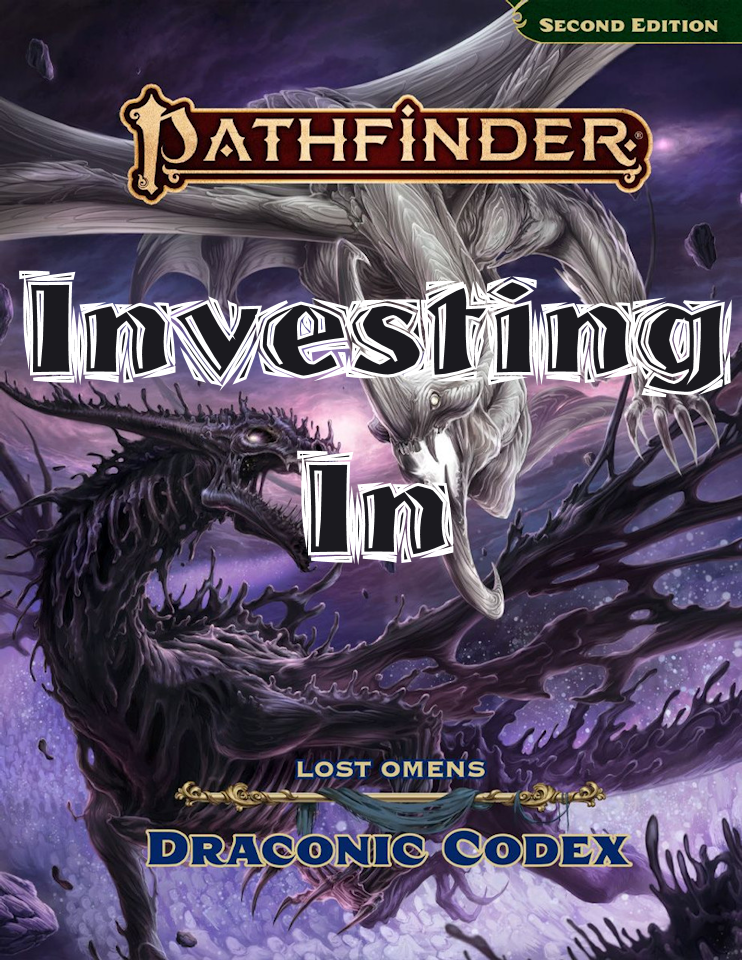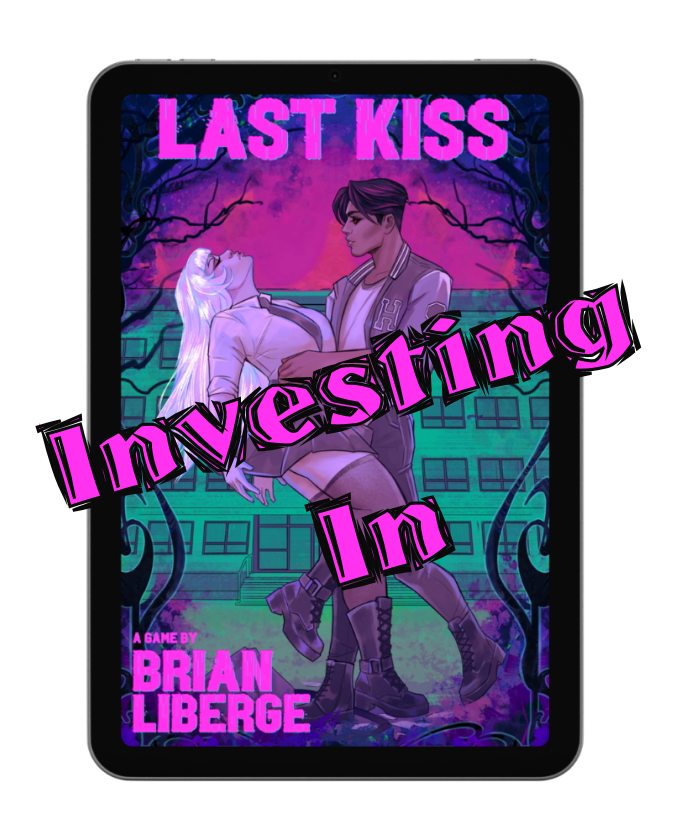I didn’t realize how much I missed gaming in person with a few friends gathered around my table. Maybe it’s not the full group I’d like (as we’re being careful about social circle and impact due to COVID) but it was something. For a moment the chaos of the election, the busy season of work, and the rest of the world was set aside. Tabletop roleplaying – heck any gathering with friends, family, and loved ones – is a bit of soul-refreshing escapism. Gathering for a session 0 of a new game, our first Pathfinder 2E game, and even starting with a scene was indeed magical!
Coming Together
I’d noted the various discussion topics for our Session 0 in a previous article and I hope that’s helpful for some of you out there starting games! My experience with others before and reviewing that made for a very positive session 0. I wanted to expand on how that went now that we’d had it, including a few useful activities we did to help us bridge our plans and the characters together to the story.
First for Part 1 we decided on our every other week schedule, trying to plan food (while we can get together and hopefully we won’t have to go all virtual), avoiding distractions at the table, and having a parking lot for rules discussions that aren’t life and death situations. Part 2 had us discussing how all core rules were allowed as well as the ability to use variant ability scores. We won’t have any homebrew rules (for characters anyway) and we wanted to focus on a cohesive group for the player characters. I’ll get more into that later, but suffice to say covering the necessary skills and supporting one another without stealing others’ limelight.
Part 3 was about being open and honest with dice rolls, no fudging, and rerolling if they all off the table. I noted I wanted a fair and impartial story as well, letting the dice decide the story though being fair about cool ideas the players’ might have. I don’t want to limit their creativity and I feel Pathfinder 2E makes it easy to find a way to expand a challenge or event to accommodate the creativity. I set some clear expectations about character and player agency, influenced by spells or abilities possibly but always for the purpose of the story or befitting the creature. I discussed the X-Card and they insisted they felt comfortable just calling out if they’re uncomfortable. What I really liked here is how they discussed how valuable this sort of discussion, these tools (like the X-Card) are valuable at a convention where not everyone knows one another. I’m really hoping to get my crew to Gen Con next year! And see you all there too!
Lines, Veils, Wants, Don’t Wants
From discussion of the X-Card I brought up lines, veils, wants, and don’t wants. We decided on some basics like no evil characters, no pugwampi… Suffice to say dealing with pugwampi in Legacy of Fire was enough for anyone. We turned to the lines and veils we wanted, mostly aroundly sexual activity and certainly around violence to children. I know my friends trust me with stories, but I appreciated having the open and honest conversation. They also clearly spelled out they didn’t want to deal with boat combat or getting stuck in the bureaucracy of nations. Of course, I can’t promise someone won’t try to use such against them, but with this pulp action crew I’m sure they’ll go busting out. I’m reminded of Chrono Trigger as you allow a trial to happen but end up breaking out of prison!
There was a whole list of things they wanted to include and with the premise of expeditions across the world, I’m guessing it won’t be difficult! Arcadia, the Mwangi Expanse and the Academy (shouldn’t be too hard with the announced book for June!), the ruins of Azlant, dragons, lots of travel, visiting the Darklands, having various contacts and bases of operations (reputation and influence systems will help here), as well as the organizational tie-ins like the Esoteric Order of the Palatine Eye and the Bellflower Network. I do wonder if the Pathfinder Society will appreciate this growing organization and its influence over time… I promised plenty of action, travel to exotic locations, and leveraging the amazing world of Golarion through the Lost Omens books. I’ve sort of been hyped for them since 2E came out, which you might have noticed early on through my first and other articles.
Characters & Connections
But while a locale can set a mood and provide a venue for your story, it’s the characters that drive it! To help establish the background of our characters and give them direction into the initial plot, I ran an exercise that would collection the following information:
- Where the character was from: any anywhere was an option!
- A strong connection to two characters: either a way to establish strong trust or having worked together
- A loose connection to the other character(s): heard of them, a vague omen or prophecy
- How they learned about the group they’ve joined: in this case the Expedition Coalition
- And why they care about it: they want to explore, they want to help stop evil nations, etc.
- An organization they were a part of or now representing
I was trying to employ some narrative collaboration while also establishing the party as something more than strangers. In our case of four players I had them do strong connections to those seated beside them and a loose connection to the person across the table. They didn’t have to know each other well: perhaps they once met traveling on a ship, knew another’s parents, or in the case of a loose connection: the Listeners of the Mordent Spire whispered to the elven druid of a “red and gold” kobold with great draconic power (as one player is using the summoner!).
I wanted to avoid the classic strangers falling into adventure and instead quickly build some trust, while still allowing the unveiling of player secrets and details as that’s always fun to explore in the course of the story or as the players have various conversations. I’ve appreciated the bridging activities of other game systems like FATE. Additionally I asked each to name an organization that they were involved in or now representing, and they would start with a reputation of 5 for the related organization.. Our kobold summoner had joined the Sandpoint Mercantile League. Our Mordent elf druid would represent the Spire. The tengu oracle had joined the Esoteric Order of the Palatine Eye. And our half-elven swashbuckler freedom fighter from Kintargo (as we’re going based on the fact all the previous paths happened including Hell’s Rebels) would represent the Bellflower Network.
With our Session 0 activities and character background details completed, we rolled right into our first scene: arriving in Riddleport and finding “the Pit Fiend!” Next time I’ll provide some detail of how I used some established venues and characters from Riddleport as well as an Influence challenge to get us started!
Investing In:
I wasn’t quite sure what to name my article series when I first started but the idea of showcasing or discussing things that make me excited, that I find new and interesting, or maybe I’m otherwise passionate about seemed to fit with the idea of Investing In something like the Pathfinder 2E mechanic. To use some magic items you have to give that little bit of yourself, which helps make these things even better. I like the metaphor of the community growing and being strengthened in the same way!
I also want to hear what you’re Investing In! Leave me a comment below about what games, modules, systems, products, people, live streams, etc you enjoy! You can also hit me up on social media as silentinfinity. I want to hear what excites you and what you’re passionate about. There’s so much wonderful content, people, groups (I could go on) in this community of ours that the more we invest in and share, the better it becomes!
Sources
Banner – Variant Rules chapter art, Gamemastery Guide, Paizo
- Journey, Creative Commons Attribution, Ninjatic
- Water trees, Creative Commons Attribution, Themefinland
- Adventures Road, Creative Commons Attribution, Hieronymus7Z









